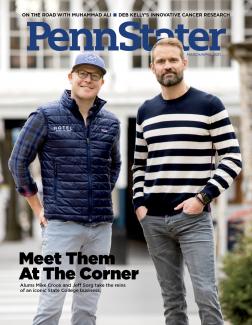When cancer spreads in the body, it first sends out tiny advanced scouts known as exosomes. These extracellular vesicles bud off the original tumor cells and spread through the bloodstream, hunting for new territory, says Cameron Varano, an assistant research professor in biomedical engineering who came to Penn State in 2019 from Virginia Tech, where she was Deb Kelly’s first graduate student. Her goal is to one day implant tiny traps in the body that would capture these exosomes and allow doctors to tell where the cancer is heading next.
Before she can achieve that goal, she must first figure out how to distinguish cancerous exosomes from the myriad others that cells produce each day. Scientists can do that now by breaking open the exosomes and examining the material inside, but that isn’t a practical solution to early detection. As Varano explains, “that would be like if we all had to go through a psychological evaluation to get onto an airplane,” she says. “That would be ridiculous. Airport security would just be an absolute nightmare, and no one would be able to get on. But if we can look at the external features, like we do with metal detectors for people in airport security, then we might have a chance of being able to find these.”
To do that, Varano is using the Huck Institutes’ powerful electron microscopes to visualize how cancerous exosomes differ from non-cancerous ones. Already, she and other researchers have found that the cancer exosomes are bigger and “squishier” than normal ones, which might provide ways of detecting them in the body.




